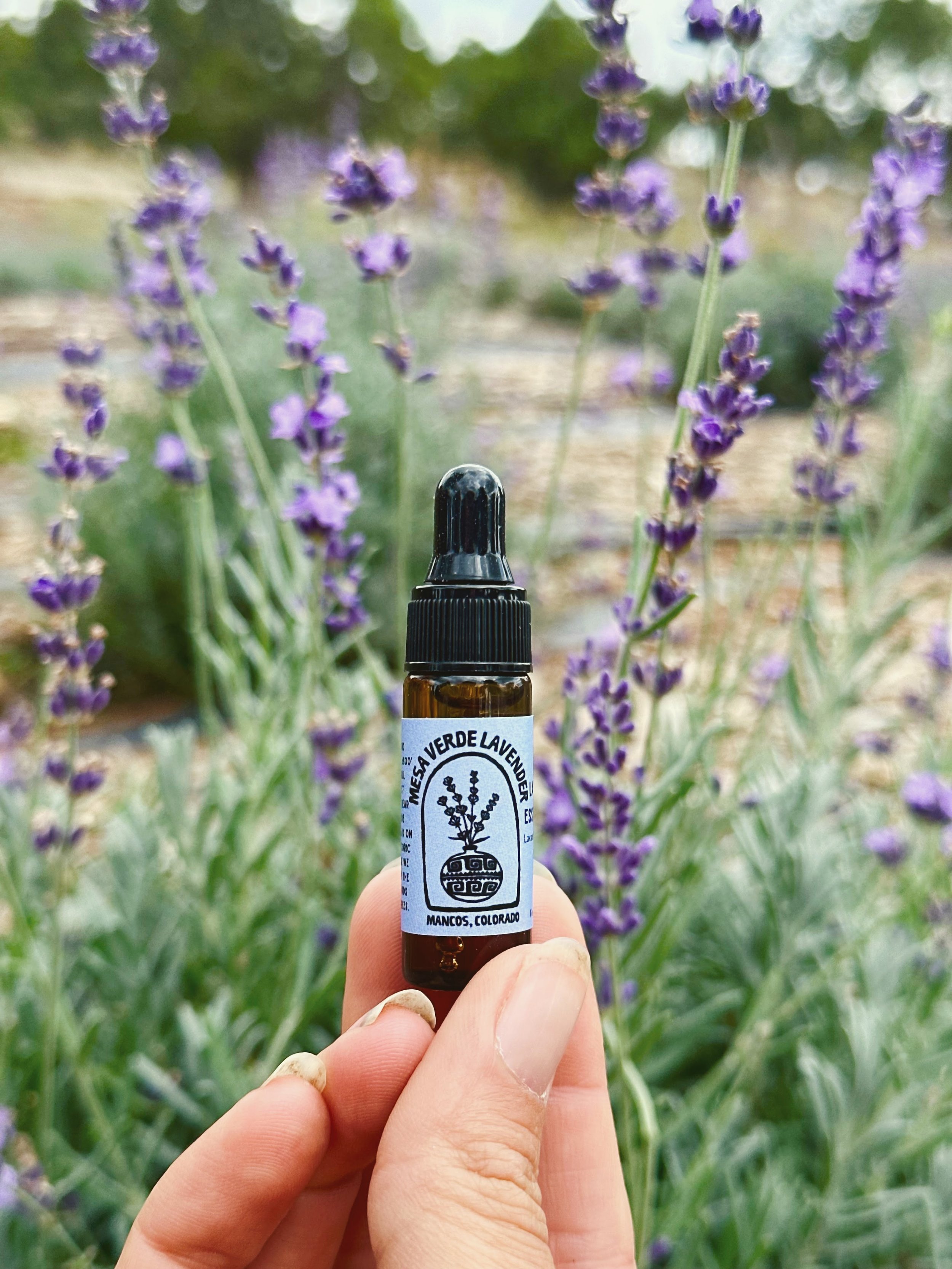Is Lavender Oil Safe for Cats?
Here at Mesa Verde Lavender, we love cats. We have two kitties named Guaca and Mole! When you come visit, Mole will love getting attention from you while Guaca will run and hide. She really shows where the term “scaredy cat” comes from.
Lavender oil is widely known for its calming scent and numerous benefits for humans, from aiding in sleep to treating minor skin irritations. However, when it comes to using lavender oil around pets, particularly cats, there’s a significant need for caution. While lavender is generally safe for humans, its use around cats can lead to serious health risks.
Understanding Cats and Essential Oils
Cats have a unique metabolism that makes them more sensitive to essential oils than other animals or humans. Their liver lacks certain enzymes needed to break down the compounds found in many essential oils, including lavender oil. This sensitivity can lead to toxicity if lavender oil is ingested, inhaled, or absorbed through the skin.
Key Points to Understand:
Cats’ Metabolic Differences: Cats lack the enzyme glucuronyl transferase, which is crucial for metabolizing certain compounds found in essential oils.
Rapid Absorption: Cats have thin skin, which allows for rapid absorption of oils, leading to a higher risk of toxicity.
Potential Risks of Lavender Oil for Cats
While lavender oil is often praised for its soothing properties, it can be toxic to cats in several ways:
Ingestion: If a cat licks lavender oil directly from your skin or from a surface where it was applied, it can lead to gastrointestinal issues such as vomiting and diarrhea. In severe cases, it can cause central nervous system depression, resulting in lethargy or even liver damage. Learn more about lavender oil toxicity in cats
Inhalation: Lavender oil used in diffusers or sprays can cause respiratory problems in cats, including coughing, wheezing, and labored breathing. Cats are more sensitive to airborne chemicals, and prolonged exposure can lead to severe respiratory distress. Luckily Guaca and Mole sleep and live in a different area of the farm than our dog, Chaco. So, we never diffuse lavender in the area where Guaca and Mole reside.
Skin Contact: Even topical use can be harmful. Cats may absorb the oil through their skin, leading to potential toxicity. Symptoms include redness, itching, or more severe systemic effects.
Common Symptoms of Lavender Oil Poisoning in Cats:
Drooling or excessive salivation
Vomiting and diarrhea
Lethargy or weakness
Tremors or seizures
Difficulty breathing
Low heart rate (bradycardia)
If you suspect your cat has been exposed to lavender oil and is showing any of these symptoms, it’s crucial to seek veterinary care immediately.
Why Some Sources Suggest Lavender Oil Is Safe for Cats
There’s often confusion due to some sources suggesting that lavender oil can be used around cats in diluted forms. While very diluted lavender oil might be less harmful, the risk of toxicity still exists, especially with frequent exposure. The safest approach is to avoid using lavender oil around cats entirely. Read more about the risks of essential oils for cats.
Safe Alternatives to Lavender Oil
If you’re looking to create a calming environment for your cat, consider these safer alternatives:
Catnip: A natural herb that most cats enjoy, which can provide a calming effect.
Valerian Root: This herb can have a similar effect to catnip and is generally safe for cats.
Pheromone Diffusers: Products like Feliway mimic the calming pheromones of cats and can be an excellent non-toxic option.
Hydrosols: A Safer Option for Cats?
Hydrosols, the water-based byproduct of essential oil production, are often cited as a safer alternative to essential oils. However, caution is still necessary when using hydrosols around cats. While they are less concentrated, hydrosols still contain some of the same compounds as essential oils and can pose risks if used improperly.
If you’re considering using a hydrosol around your cat, such as lavender hydrosol, it’s essential to:
Use it in a well-ventilated area.
Ensure that your cat can leave the room if they wish.
Monitor your cat for any signs of distress.
For instance, Mesa Verde Lavender Farm produces a high-quality lavender hydrosol that’s excellent for household use, but it’s crucial to remember that even natural products need to be used with caution around pets. We do not spray our lavender hydrosol onto our cats. Always consult with your veterinarian before introducing any new products into your home. Learn more about hydrosols.
How to Safely Use Lavender Products in a Cat Household
If you love lavender and live with cats, here are some tips to ensure your pet’s safety:
Avoid Direct Use: Don’t apply lavender oil directly to your cat’s skin or fur, even in diluted forms.
Keep Products Out of Reach: Store lavender oil and lavender-infused products where your cat cannot access them.
Use Diffusers Sparingly: If you use lavender oil in a diffuser, ensure it’s in a well-ventilated space that your cat can avoid.
Monitor Your Cat: Always observe your cat for any signs of discomfort or illness after using lavender products in your home.
Lavender Oil and Cats
While lavender oil is a favorite for many humans due to its soothing properties, it poses significant risks to cats. The safest course of action is to avoid using lavender oil or any lavender-infused products around your feline friends. Instead, opt for cat-safe alternatives that can help create a calm and healthy environment for your pet.
At Mesa Verde Lavender Farm, we’re committed to producing high-quality lavender products, including oils and hydrosols, crafted with care and respect for nature. While our products are perfect for human use, we urge all pet owners to exercise caution when using any essential oils around their pets.
Always prioritize the health and well-being of your pets, and consult with your veterinarian if you have any concerns about using essential oils or hydrosols in your home. By making informed choices, you can enjoy the benefits of lavender without putting your furry friends at risk.



